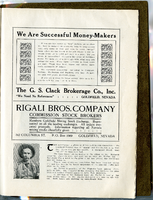Search the Special Collections and Archives Portal
Search Results
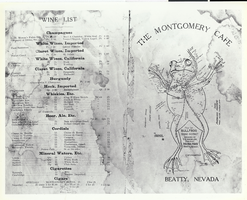
Photograph of a menu from the Montgomery Cafe, Beatty, Nevada, circa 1950s
Date
Archival Collection
Description
Image
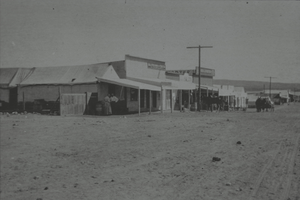
Slide of street scene, Beatty, Nevada, circa 1906
Date
Archival Collection
Description
Image
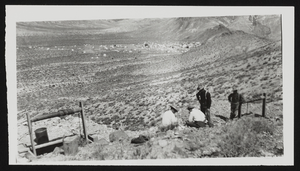
Four men outside a mine: photographic print
Date
Archival Collection
Description
Image
Las Vegas and Tonopah Railroad Blueprints
Identifier
Abstract
The Las Vegas and Tonopah Railroad Blueprints consists of twenty-four of the original thirty blueprints as part of the Interstate Commerce Commission (I.C.C.) Valuation Index Section I. They are labeled "Right-of-Way & Track Map, Las Vegas & Tonopah Railroad" and dated June 30, 1915. The blueprints contain four miles of railroad lines per sheet with a scale of 6 3/4 inches per mile. The collection also includes one sheet from the Bullfrog Goldfield Railroad company, which used the track, yard, and facilities of the Las Vegas and Tonopah and Railroad company between Beatty and Goldfield, Nevada.
Archival Collection
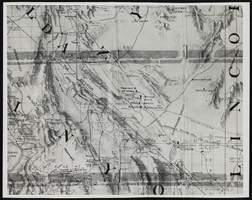
Topographic map of Nevada and California: map
Date
Description
Image
Dorothy Eisenberg Papers
Identifier
Abstract
The Dorothy Eisenberg Papers (early 1900s-2009, bulk 1970-2000) are comprised of organizational records, photographs, newspaper clippings, and scrapbooks reflecting her activism and volunteer work related to education, the Bullfrog County Commission, Las Vegas Clark County consolidation, League of Women Voters (LWV), Las Vegas Jewish Federation, Equal Rights Amendment (ERA), and Silver State Political Action Committee.
Archival Collection
Raymond Brooks Papers on Mining
Identifier
Abstract
The Raymond Brooks Papers on Mining (approximately 1900-1955) document Brooks' time working in the mining and railroad industries in central and southern Nevada, as well as in Rhodesia (Zimbabwe). Brooks worked as a mining engineer and executive in many Nevada mining districts, including Goldfield, Tonopah, Bullfrog, Rawhide, Chloride, Beatty, Wonder, and Searchlight. The collection consists of photographs, photograph albums, ledgers and mining certificates, correspondence, and publications that all relate to mining. Notable figures mentioned in material throughout the collection include George Nixon, George Wingfield, William MacMaster, and James Butler.
Archival Collection
Memorial for Queer Rhyolite Papers
Identifier
Abstract
Archival Collection

